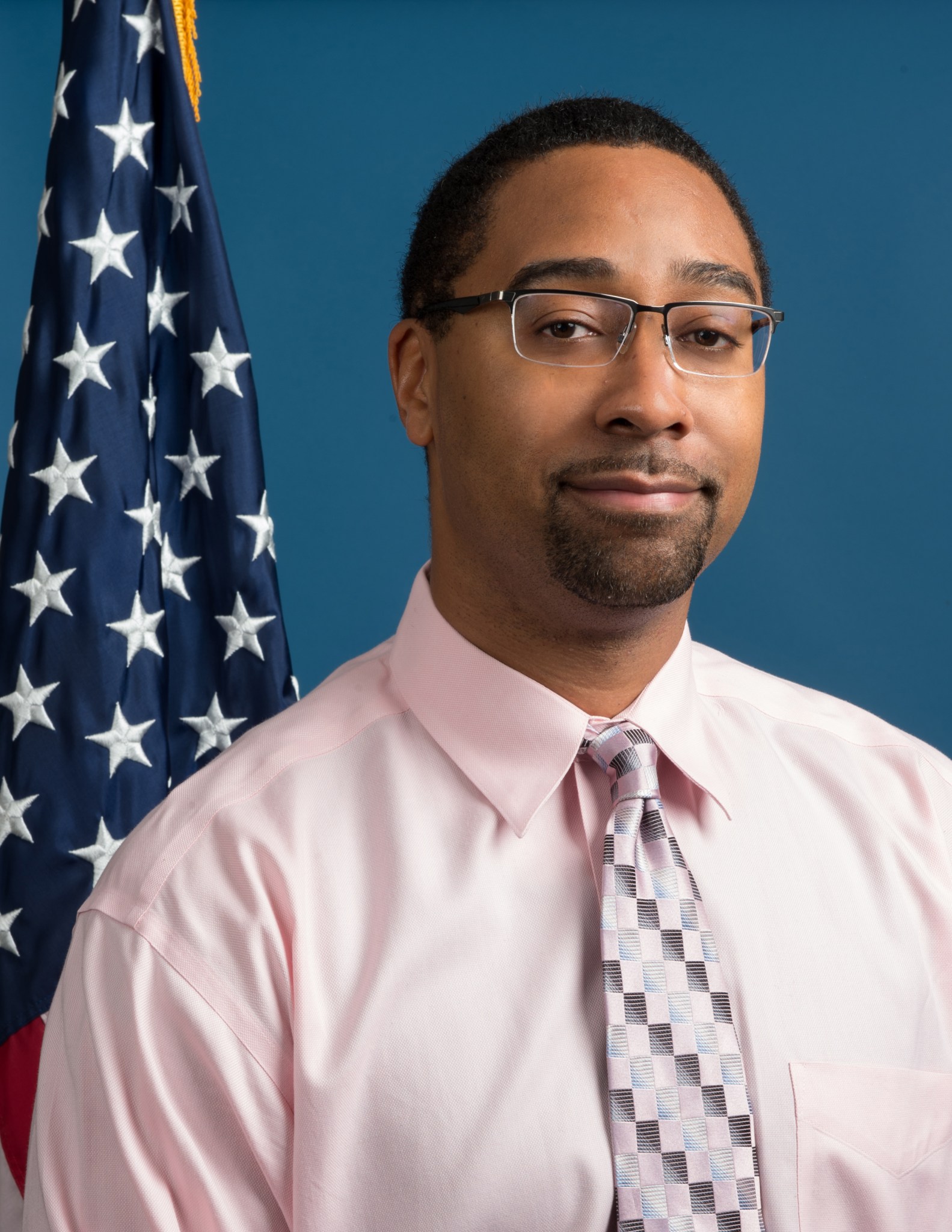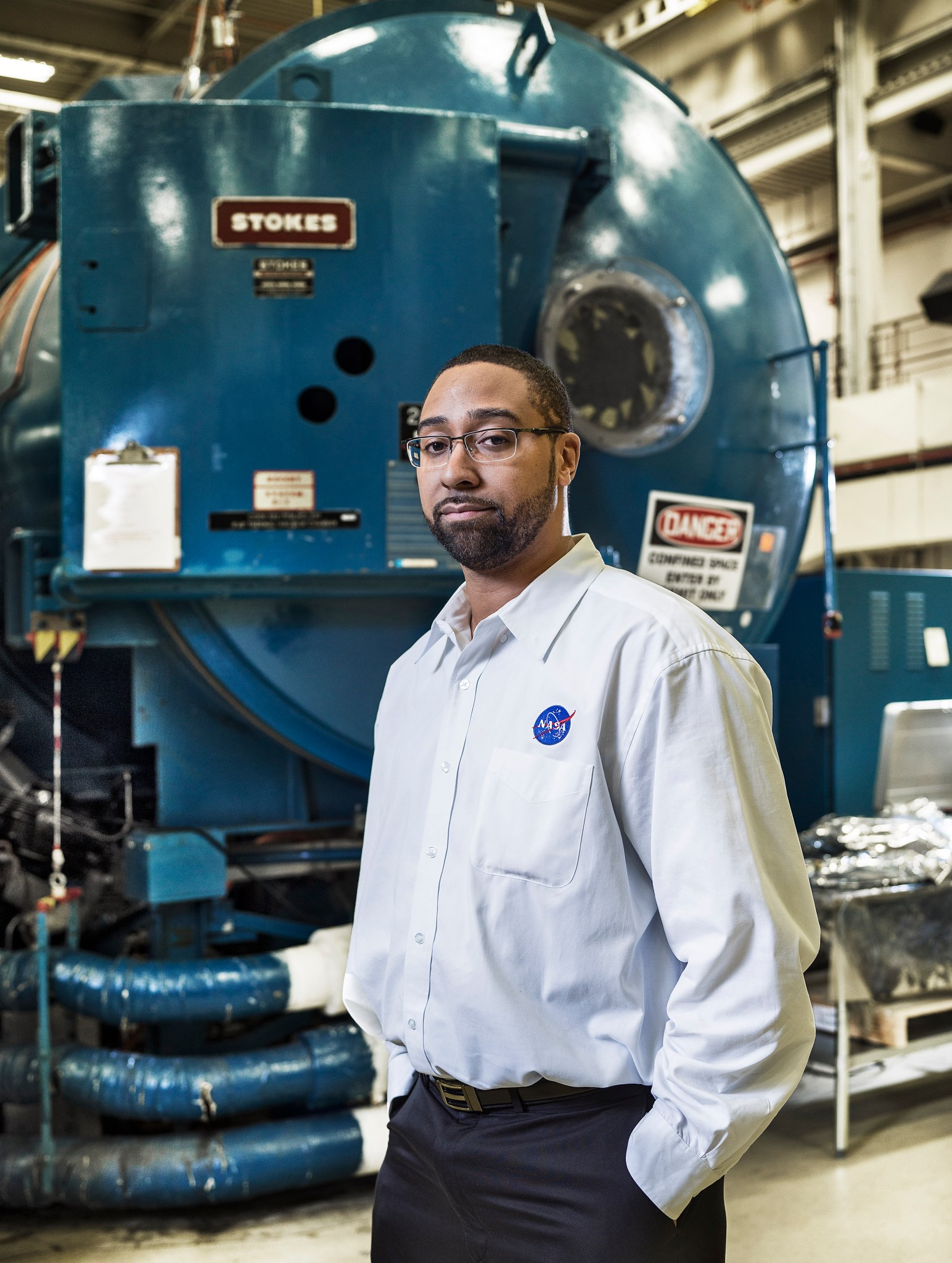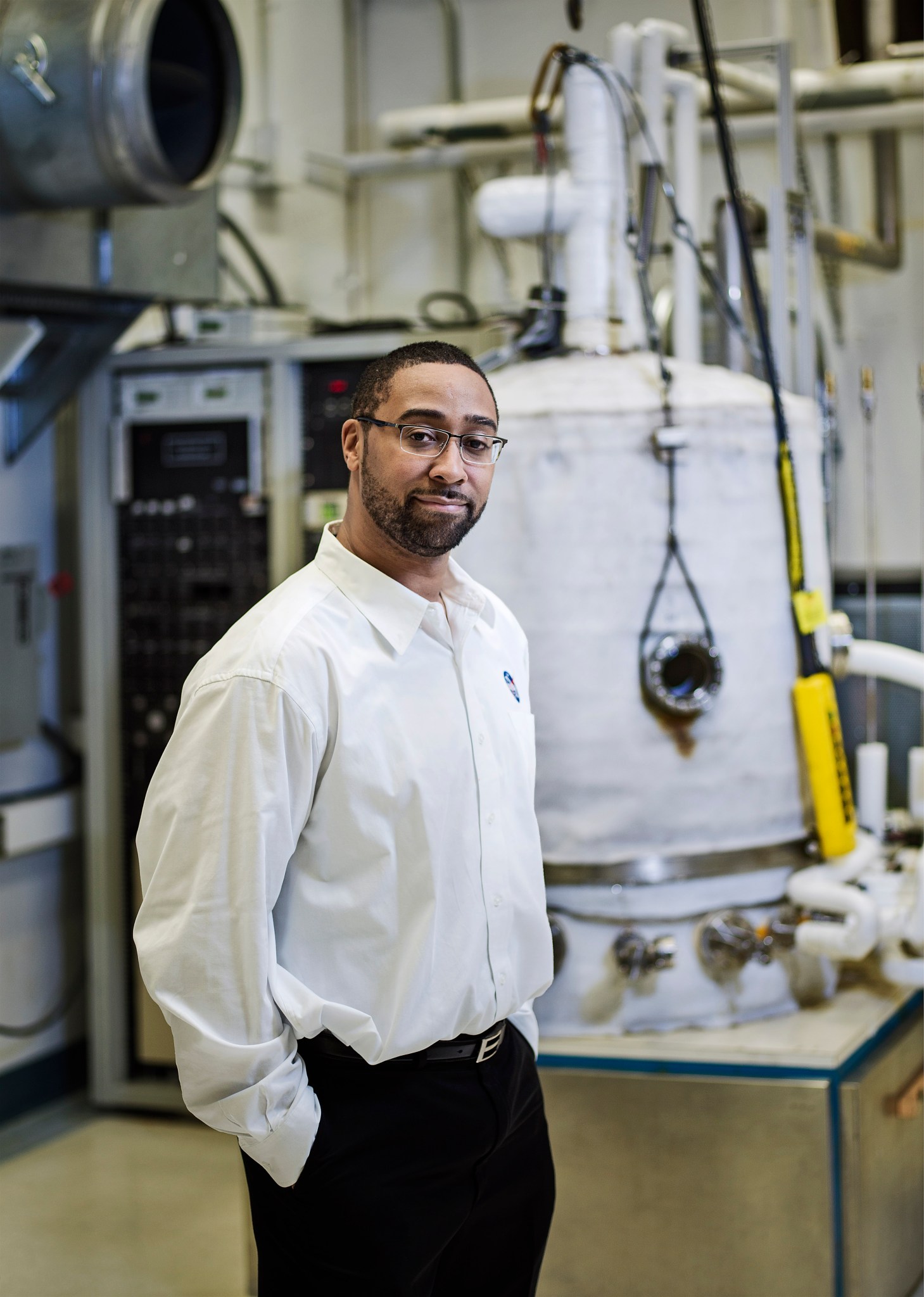Carlton Peters, aerospace engineer and branch chief of the Thermal Engineering Branch, never blows hot or cold. He keeps the temperature of all space components just right.

Name: Carlton Peters
Title: Branch Chief
Formal Job Classification: Aerospace engineer
Organization: Code 545, Thermal Engineering Branch, Engineering and Technology Directorate
What do you do and what is most interesting about your role here at Goddard? How do you help support Goddard’s mission?
I manage the Thermal Engineering Branch, where we primarily ensure that our satellites, instruments, and components maintain their temperature safely in space. This is done through design, analysis, and environmental testing. Additionally we research and develop technologies to investigate new methods of meeting thermal requirements.
Was there a moment when you wanted to be an engineer?
I was that little kid taking things apart and putting them back together, certain that I wanted to be an engineer.
What is your educational background?
I grew up in Brooklyn, New York. I split high school between New York and Burlington, New Jersey, eventually graduating high school at 15 years old. I got a bachelor’s in mechanical engineering from Stevens Institute of Technology in New Jersey.
How did you come to work at Goddard?
As a senior, I attended a National Society of Black Engineers convention, where I met Dan Krieger at a career fair. He passed along my résumé, I was interviewed, and I was offered a job at Goddard as an engineer in the Thermal Engineering Branch in 1999. Although I took a few details outside of the branch, I have been assigned to the same branch all this time.

When did you become a manager? What is your style of management?
In 2011, I became an associate branch head. In late 2016, I became branch chief.
For me, management is all about connecting with the people. How I connect depends on the individual. For some people, it is just taking the time to sit with them and talk to them. For others who may be more introverted and do not like face-to-face conversations, it may be via email. Sometimes it is going to lunch with a few of them, outside the office environment. It certainly is about taking the time to cultivate those relationships.
How do you promote teamwork especially when part of the team are introverts?
It is very difficult. It takes understanding people in general, understanding how they like to work and connecting the right people together. Once you have the right people connected, teamwork flourishes. Just make sure you foster those connections in an environment that focuses on both the work and the community. Also, I provide a safe space and the time when we need to have difficult conversations.
What is most interesting about thermal testing that people may not know?
Thermal testing simulates the flight environment as best we can on the ground. We provide the test article with an environment that it will see, worst-case, in orbit: hot and cold environments, which allows the test team to verify the performance at the extremes.
Although no two tests are the same, there are plenty of similarities among the tests. For most Earth-orbiting satellite tests, the coldest environment the equipment is exposed to is a liquid nitrogen temperature, which is about minus 196 degrees Celsius, or minus 346 F. We really do not expose equipment to extreme heat for our Earth-orbiting missions because the space environment is more cold than hot. However, the impact of the Sun is accounted for in our worst-case environmental simulations. We bake hardware many times to about 50 degrees Celsius, or 122 F.
As the Chair of the African American Advisory Committee (AAAC), what do you feel are your most important duties?
Advocating for our constituency. I am looking for a fair and equitable workforce. One of our biggest goals is fairness and equity throughout all of Goddard’s sites. Additionally, one of our big challenges is recruiting and ensuring that we are seeing a balanced set of candidates across all levels of diversity. By all levels of diversity, I mean age, race, gender and all walks of life. While I am doing this in the role of African American Advisory Committee chair, I want to make sure that all constituencies are represented.

Our committee meets once a month. In addition, the Diversity and Inclusion Committee meets once a month and includes members from all directorates and advocacy groups including ours.
What do you see as the AAAC’s most important goals?
Early in 2020, we had a leadership retreat. We came up with a few goals, long- and short-term. Some of our short-term goals are developing a new vision for our committee and connecting better with the Equal Opportunities Program Office. Long-term, we want to focus on recruitment of new employees to Goddard and also recruitment of new members to our advisory committee.
As AAAC’s Champion, how has Dave Mitchell helped?
Dave, first and foremost, is an awesome person, I’m appreciative of his support. He has been our champion during my entire tenure. He has been extremely generous with his time, resources and connections to higher levels of management. He is very fair, equitable, open and honest.
What annual events does the AAAC typically hold?
We have two big events. The first is our Martin Luther King event, which includes a keynote speaker. Previously we have had Dr. Terrence Roberts of the Little Rock Nine and Kenneth Harris, a national rising star and one of Goddard’s very own mechanical engineers. Our second main event is our holiday mixer, which we have around the end of the year. Usually people come from the center director’s office all the way down to branch level employees. This is our opportunity for fellowship and to see people you may not have had an opportunity to connect with in a long time.
We also hold a number of smaller events during Black History Month. In 2020, we had Gwendolyn Briley-Strand present her one-woman show called “Harriet Tubman” at NASA’s Wallops Flight Facility, a sister facility to Goddard, in Virginia.
Who most inspires you?
Russell Williams. I call him “Grandpa” although he was not my biological grandfather. He passed away a number of years ago. He was my biggest inspiration from the standpoint of why I do what I do on a daily basis. He taught me to keep my family first and still give to others. He and his wife Eleanor, whom I call “Grandma,” used to babysit me. They have a tremendous family and we all grew up together.
He was a man of faith first and foremost. He also worked very, very hard. He was a construction contractor. I saw him take things apart and put them back together, and wanted to do that too.
He and his wife were very dedicated to their family, and that included more than blood relatives. I truly feel like one of their grandchildren.
Is there something surprising about your hobbies outside of work that people do not generally know?
Sports and video games. While I don’t play sports much anymore, I do coach my children Jaelyn and Jaxson in basketball and flag football. As far as I can tell, my kids love having me as their coach. My wife does not coach, but she comes to every game. My mother who is retired and lives with us now also makes every single game.
What is your favorite video game?
For me, as a big sports fan, my favorite game is Madden. I’ve probably owned every edition of the game since the original back in 1988.
What is your “six-word memoir”? A six-word memoir describes something in just six words.
Honest. Trustworthy. Fair. Inclusive. Transparent. Family.
By Elizabeth M. Jarrell
NASA’s Goddard Space Flight Center

























